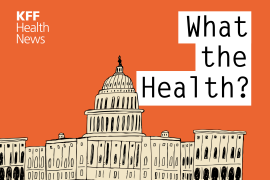Changes in Ryan White Distribution Cause ‘Hardship,’ ‘Anxiety,’ New York Times Reports
Changes in the distribution of Ryan White Program funds are creating "hardship and deep anxiety" among HIV-positive people nationwide, some advocates said recently, the New York Times reports. Congress in December 2006 reauthorized Ryan White to allow funding in more regions but less funding for support programs -- including meals, housing and legal aid -- according to the Times. In addition, Ryan White funding during the past several years has remained at about $2.1 billion annually, but more HIV-positive people are seeking treatment and living longer.
Sen. Tom Coburn (R-Okla.) and other Republicans have said that with the federal government spending more than $20 billion on HIV/AIDS treatment, prevention and research, it increasingly should focus on prevention and care rather than boosting funding. Deborah Parham Hopson -- associate administrator for HIV/AIDS at the Health Resources and Services Administration, which manages Ryan White funding -- said HRSA wants to "make sure that the majority of Ryan White dollars are spent on medical services that can impact the clinical picture of people living with HIV." Parham Hopson added that many regions receiving Ryan White funds will face "tough decisions" in allocating the funds.
HIV/AIDS experts have said that Ryan White meets needs that other programs, such as Medicaid, do not and that the support services -- such as meals and housing -- are almost as important to HIV-positive people as antiretroviral drugs. Jennifer Kates, director of HIV policy and a vice president at the Kaiser Family Foundation, said, "We have a growing population of needy patients and a growing cost of care, and the funding is not keeping pace." Kates added, "If we have someone in South Carolina not getting medicines and someone in San Francisco not getting housing, how do we choose?"
About half of the estimated 1.2 million people living with HIV/AIDS in the U.S. receive assistance from Ryan White, which covers a portion of the cost of antiretrovirals for almost 25% of U.S. people who take the drugs, according to federal officials (Eckholm, New York Times, 8/1).






